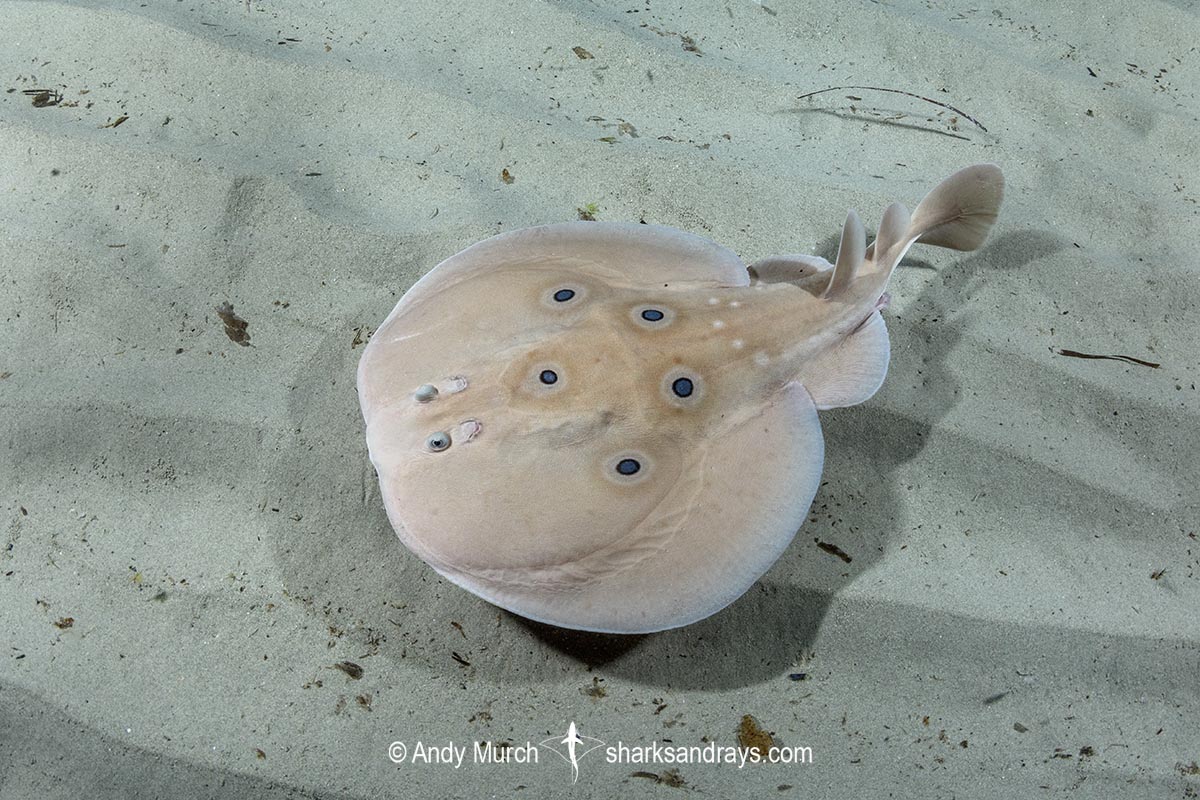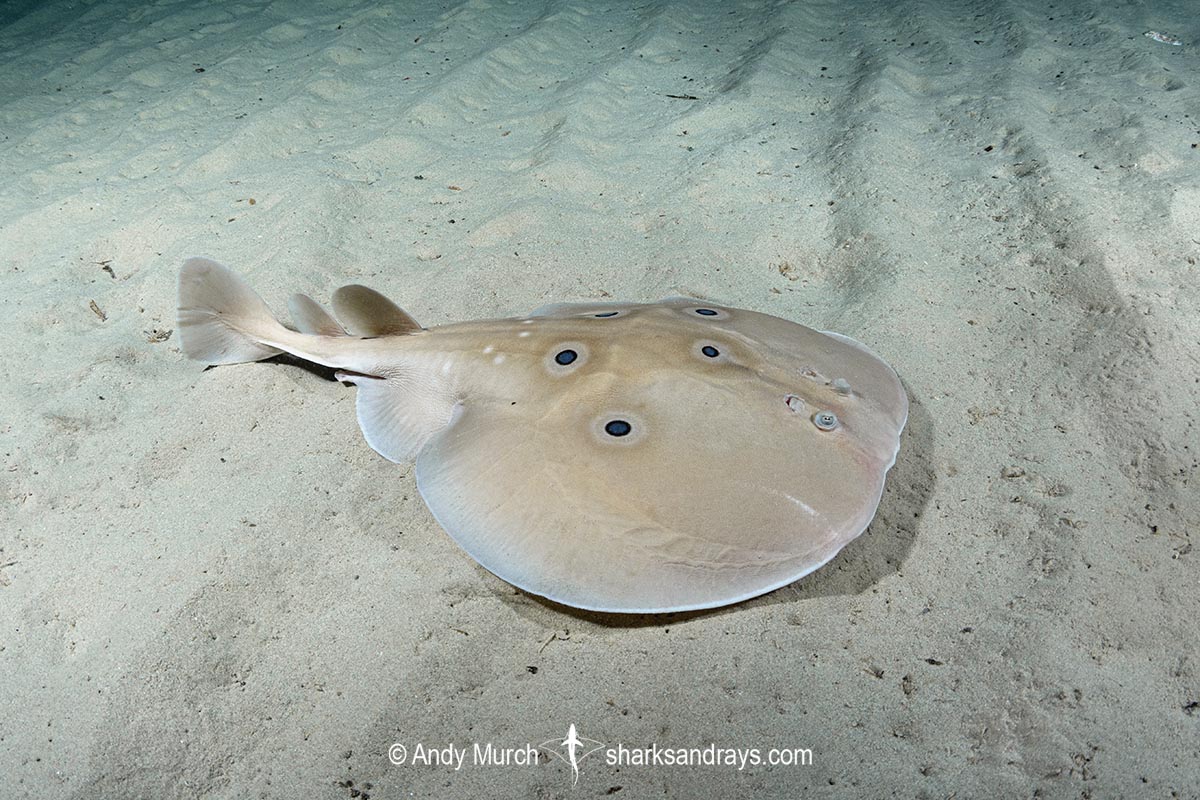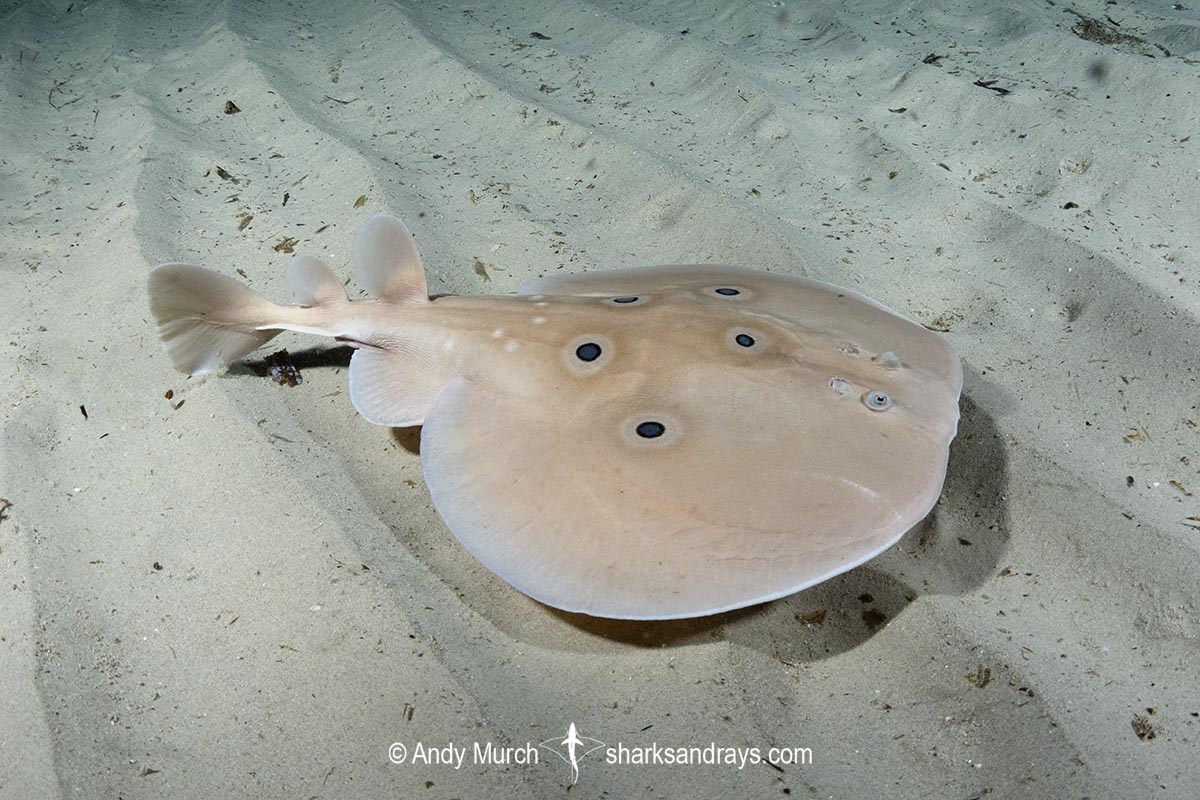Common names
Common Torpedo Ray, Eyed Electric Ray, Ocellate Torpedo Ray.
Bionomial
Torpedo torpedo
Synonyms
Raja torpedo.
Identification
A small to medium-sized torpedo ray with a thick sub-circular disc, slightly wider than long. Snout slightly protruding, with indentations at the pectoral origins. Pectoral fin apices evenly rounded. Eyes protruding, relatively large, slightly larger than spiracles. Spiracles with 8-10 small papillae. Mouth arched. Nostrils with small nasal flaps.
Pelvic fins relatively slender and long, with evenly rounded margins. First dorsal fin tall with broadly rounded apex. First dorsal posterior margin over pelvic fin. Second dorsal fin slightly smaller and more slanted with a narrower oval apex. Caudal fin high and large, sub-triangular, apices rounded, posterior margin straight or slightly convex.
Colour
Dorsum pale brown, tan, pinkish brown, or golden brown. 2-7 (usually 5) bold blue to blue/grey ocelli finely ringed in black, within broad pale rings, within slightly darker, broad, brown rings. Ocelli occasionally absent. Often with numerous eye-sized white dots on rear dorsum and pelvic fins. Ventrum white or dusky.
Size
Maximum length ~60cm.

Conservation Status
VULNERABLE
The ocellate torpedo ray is caught incidentally in commercial trawl and longline fisheries throughout its range. It is generally discarded in Europe but is retained in Senegal and probably in other parts of West Africa.
In the Mediterranean, catch data indicates that the common torpedo is slowly increasing except in the Adriatic where it has become extremely rare. In West Africa, fishing pressure is much higher. In Mauritania, the common torpedo has decreased by 73% in the last 30 years. Few records exist from neighbouring countries but declines are probably similar throughout the region. Overall, it is estimated that the species as declined by 30-49% in the last 30 years.

Habitat
Temperate and tropical seas. Benthic on soft sandy substrates. Usually close inshore to 70m, but recorded as deep as 320m.
Distribution
Eastern Atlantic. Bay of Biscay to Angola including the Mediterranean Sea. Absent from the Cape Verde Archipelago, present in Sao Tome and Principe.
Reproduction
Aplacental viviparous. Litter size 3-21 pups.
Diet
Diet consists of small benthic invertebrates and fishes.
Behavior
Nocturnal; remains buried under sand during the day.
Gulf torpedo rays produce electric discharges to incapacitate prey.
Reaction to divers
Very easy to approach. Generally remains motionless, even while being uncovered. May bolt and try to re-bury if fanned too aggressively. May try to shock divers when threatened.
Diving logistics
Common torpedo rays are difficult to find in West Africa, but they are occasionally seen at dive sites off Dakar in Senegal.
They are still relatively common at some dive sites in the Mediterranean. One excellent spot for rays (including this species) is Playa Granadella near Alicante, Spain. Like most rays in the Med, common torpedos are much easier to find at night.
Although Torpedo torpedo has undergone heavy declines in the Adriatic, reputedly, they are quite easy to find in shallow bays off the coast of Albania.
What’s new
View our full list of updates
Similar species
The common torpedo ray’s unique pattern of bold blue ocelli make misidentification unlikely.




